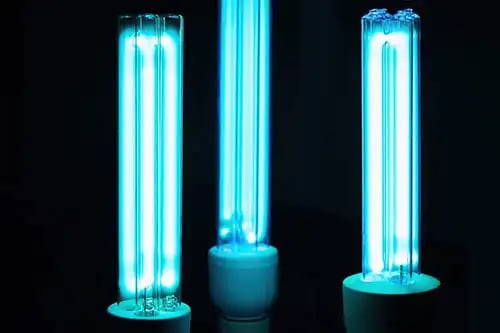
How do you know if UV test results from one vendor to the next give you an accurate comparison? How do you know what the test results mean in terms of actual world UV performance? UV testing can be a complex and confusing area of product formulation and evaluation. The complexity starts with several different testing processes that can be used to evaluate ultraviolet light exposure.
UV textile testing refers to the evaluation and measurement of the ultraviolet (UV) protection provided by textiles or fabrics. It is essential to assess the UV protection level of materials, as exposure to harmful UV radiation can cause various health issues, including sunburn, skin aging, and an increased risk of skin cancer.
UV textile testing involves subjecting the fabric to specific laboratory tests to determine its UV protection factor (UPF) or ultraviolet protection factor (UPF). The UPF indicates the fabric's ability to block or absorb UV radiation, preventing it from reaching the skin.
Here are some standard methods used for UV textile testing:
- Spectrophotometric analysis: This method involves using a spectrophotometer to measure the transmission of UV radiation through the fabric. The fabric sample is exposed to UV radiation, and the amount of transmitted and absorbed UV radiation is measured. The UPF is calculated based on the ratio of the radiation transmitted through the fabric to the radiation transmitted through a reference material.
- Standardized testing protocols: Various international standards and guidelines exist for testing UV textiles. For example, the American Association of Textile Chemists and Colorists (AATCC) and the International Organization for Standardization (ISO) have established specific test methods and requirements for determining UPF values.
- Aging tests: Fabrics may undergo accelerated aging tests to evaluate their durability and longevity in terms of UV protection. These tests simulate long-term exposure to sunlight and assess how the fabric's UV protection performance changes over time.
- Certification and labeling: Once a fabric has been tested and assigned a UPF, it may be eligible for certification or labeling. Specific organizations or programs provide certification or labeling to textiles that meet particular criteria for UV protection. These labels inform consumers about the fabric's UV protection level, enabling them to make informed choices.
Some specific types of accelerated weathering testing are:
- QUV (A & B)
- Xenon Arc
- Accelerated Outdoor Exposure
- Actual Outdoor Exposure
Within these different testing methods, other variations can impact the results.
In each case, the hours of exposure is the measure that is used to determine fading, plastisol migration, and reduction of core fabric strength. Several specimens are put into the testing device simultaneously, with a control sample set aside for comparison purposes. Examples are taken from the testing equipment at measured intervals and compared to the control. At the end of the testing process, 4 to 10 specimens would be compared to the power to see the degradation caused by exposure to the test method over time. Pretty simple. Wrong.
Different testing devices require varying levels of exposure due to the light source.
Exposure Time
Each test method requires different levels of exposure to represent a period in a natural world environment. Generally, the following hours of exposure represent one year in a Florida-like environment, assuming the testing equipment features a moisture cycle to simulate humidity.
| QUV B |
500 Hours |
| Xenon |
1000 hours |
| Accelerated Outdoor Exposure |
Variable |
| Actual Outdoor Exposure |
1 Year |
Each light source has a unique impact on the fabric specimen. Generally speaking, Xenon Arc is a more effective testing method for color fading, while QUV is more suitable for strength evaluations.
Proper exposure to "real world" exposure is not the same as lab testing because actual fabric degradation is influenced in varying degrees by three factors:
- Light
- Humidity
- Temperature
Even under the best circumstances, a lab cannot accurately replicate these factors to give you exact "real-world" performance. Every climate and every year of exposure are different when testing material outdoors.
Now back to the real world that we live in:
Multiple testing methods are necessary to determine the expected UV lifespan of your products accurately. To make an informed decision regarding fabric selection for UV resistance, manufacturers should provide comparable test results and, when possible, coordinate lab evaluations using consistent testing protocols and equipment.
At a minimum, request UV resistance test results from the manufacturer, review their testing methodology, and use the provided data to compare fabric performance.
Ultimately, the most reliable indicator of UV resistance is proven, real-world performance. Given the variability of different climates, the best assurance that a fabric will perform as needed in your specific application is a track record of success. Has the material demonstrated durability and colorfastness in previous installations? Does the manufacturer have documented results and a history of consistent product performance under outdoor exposure? While laboratory tests provide valuable insights into UV resistance, actual field experience remains the definitive measure of long-term UV protection.